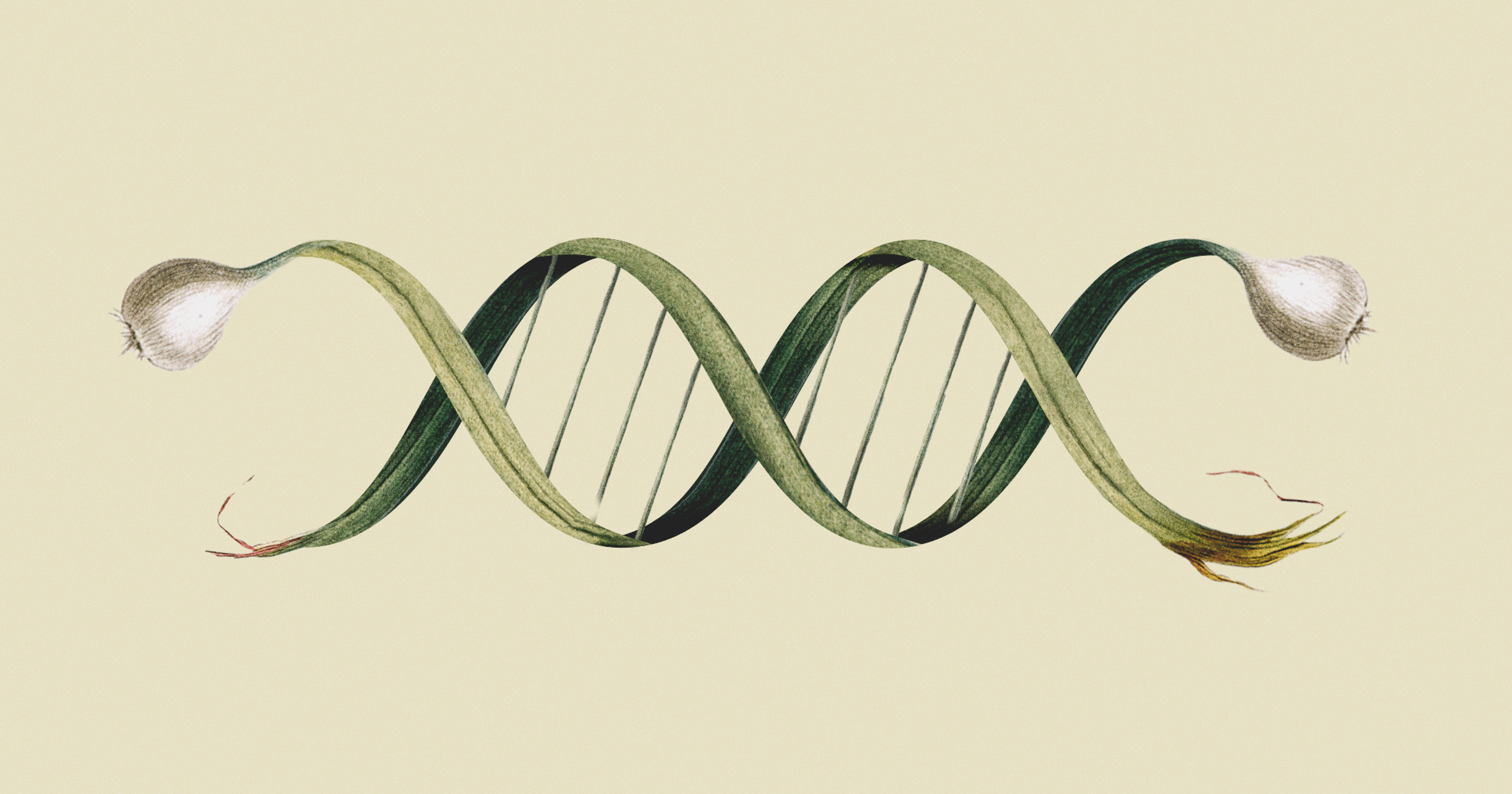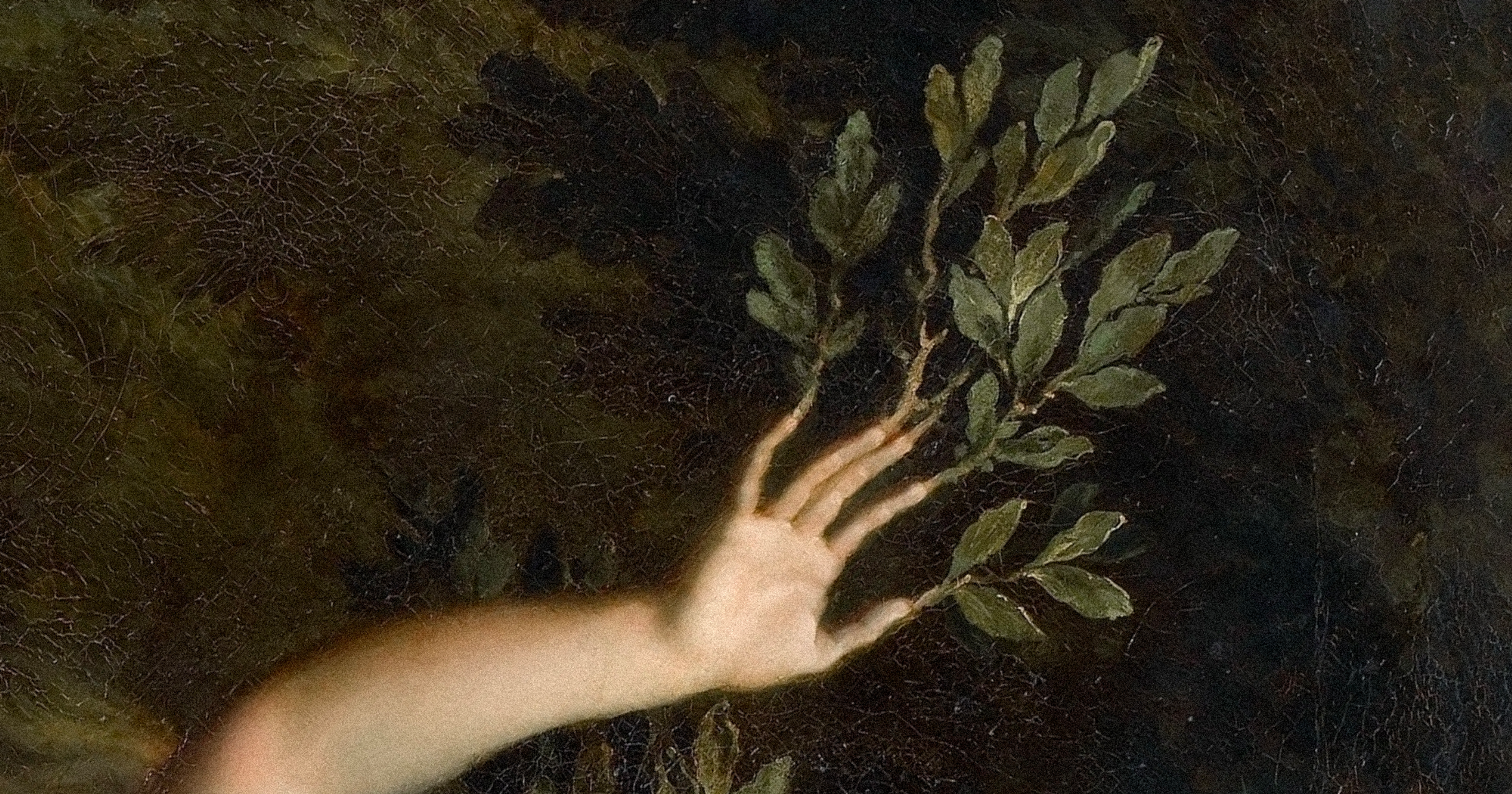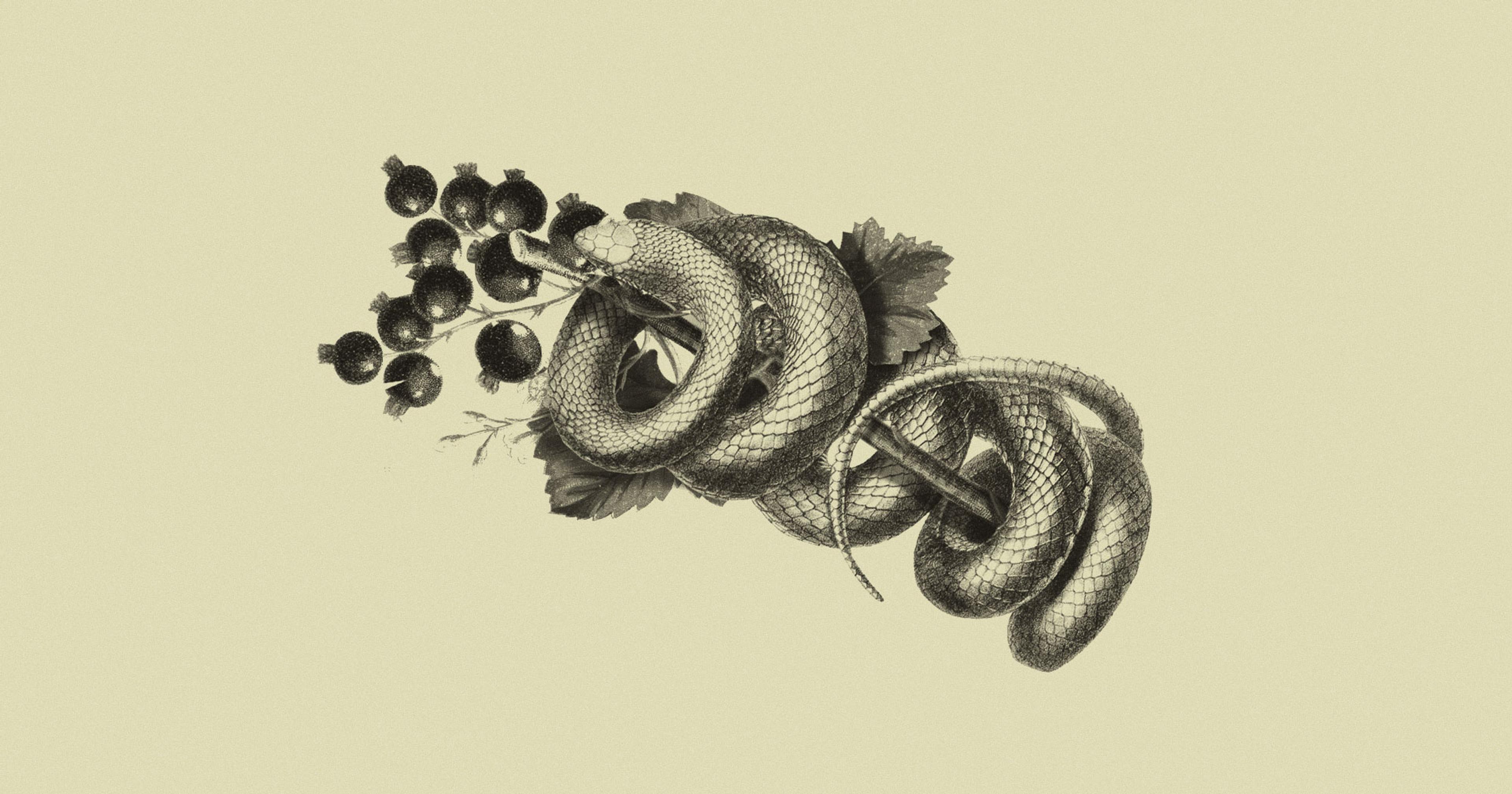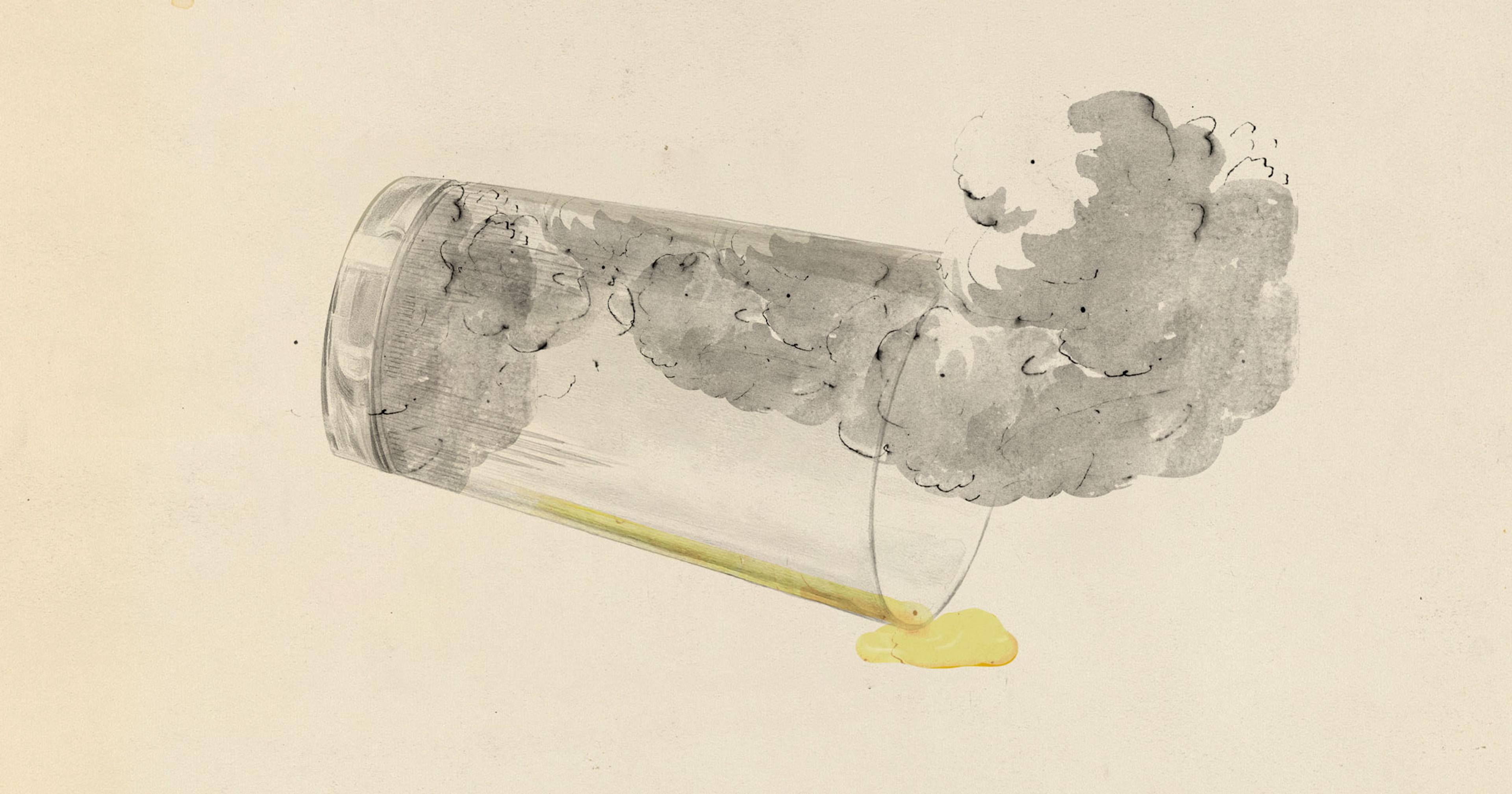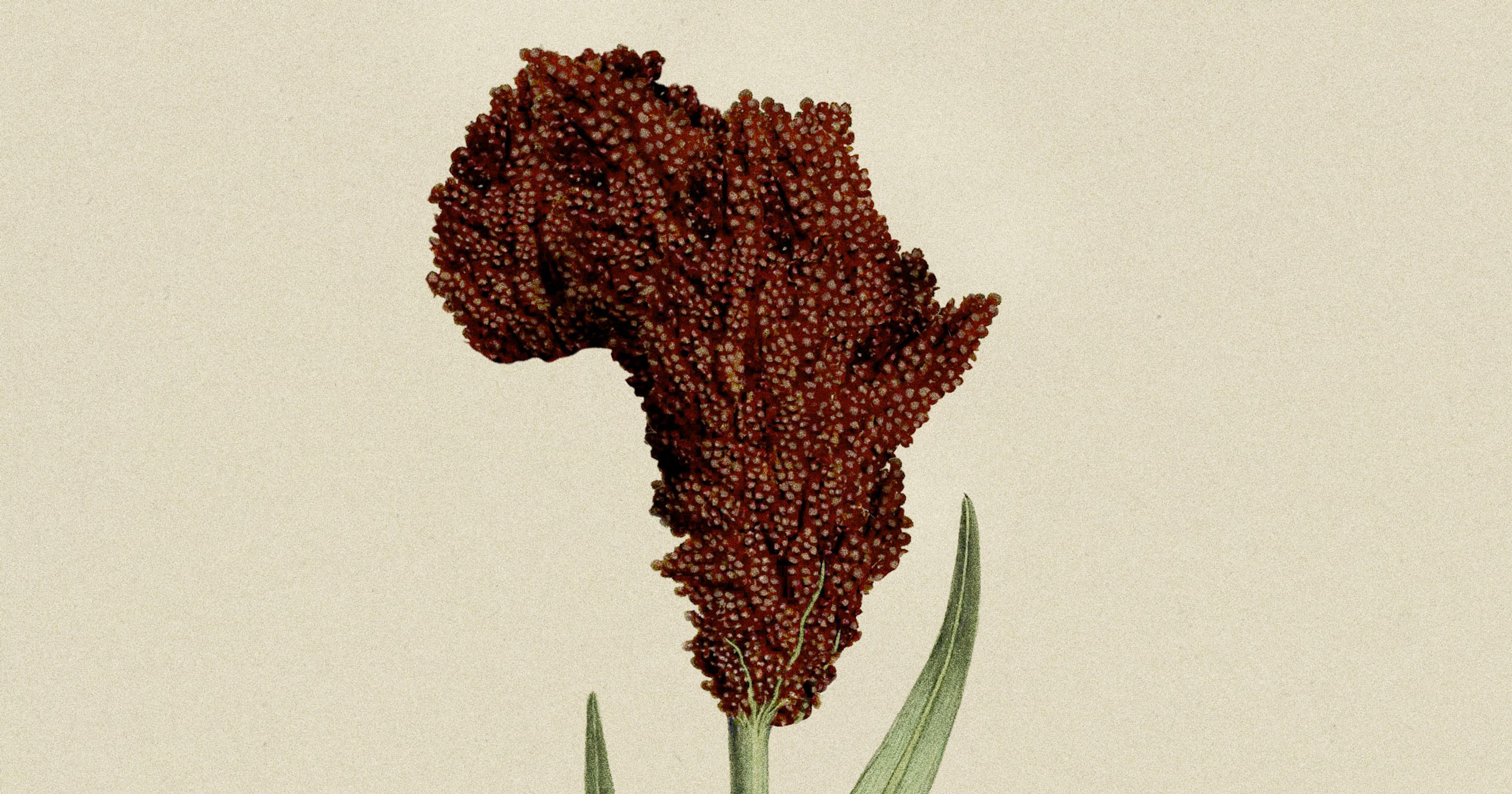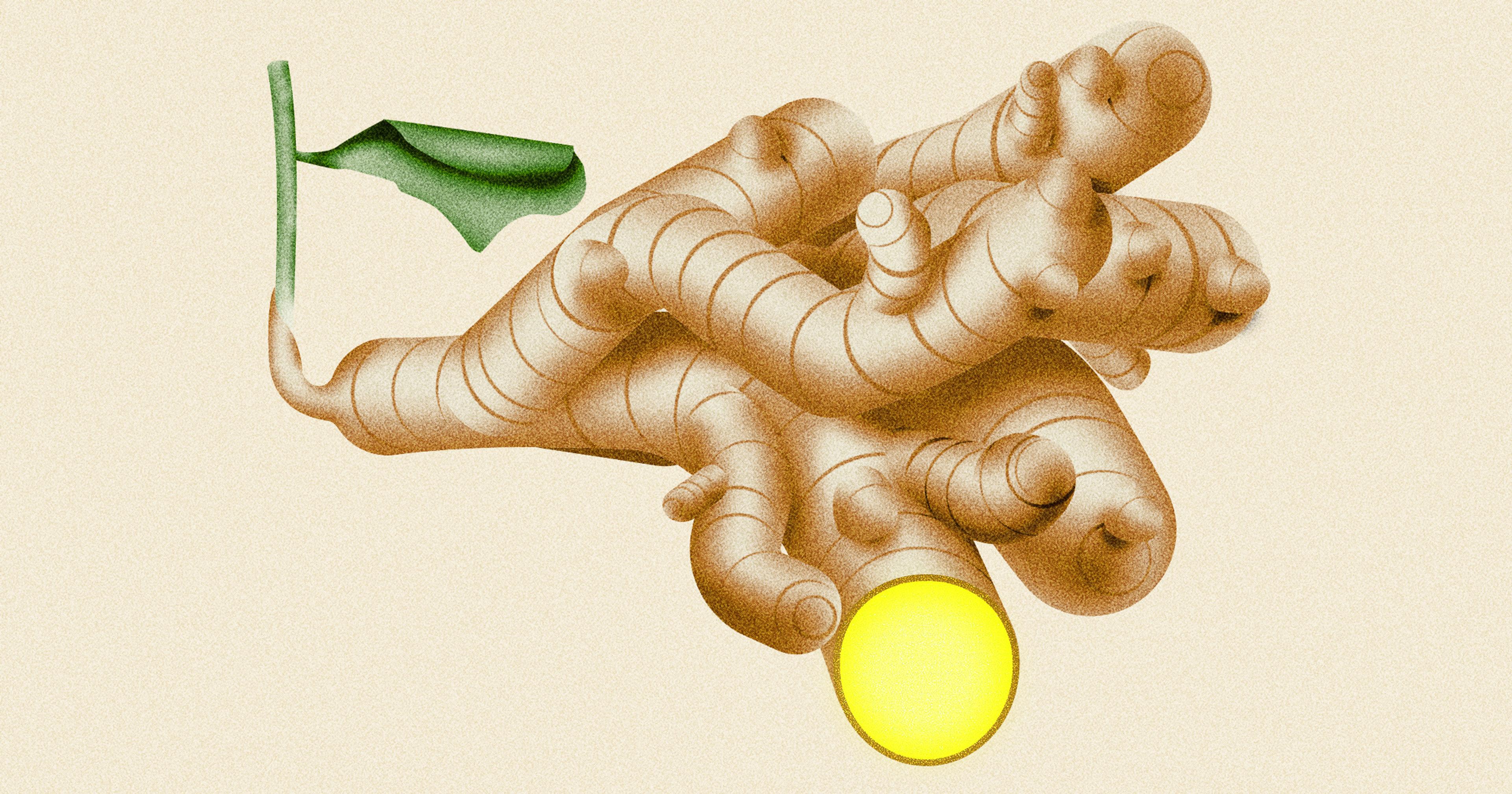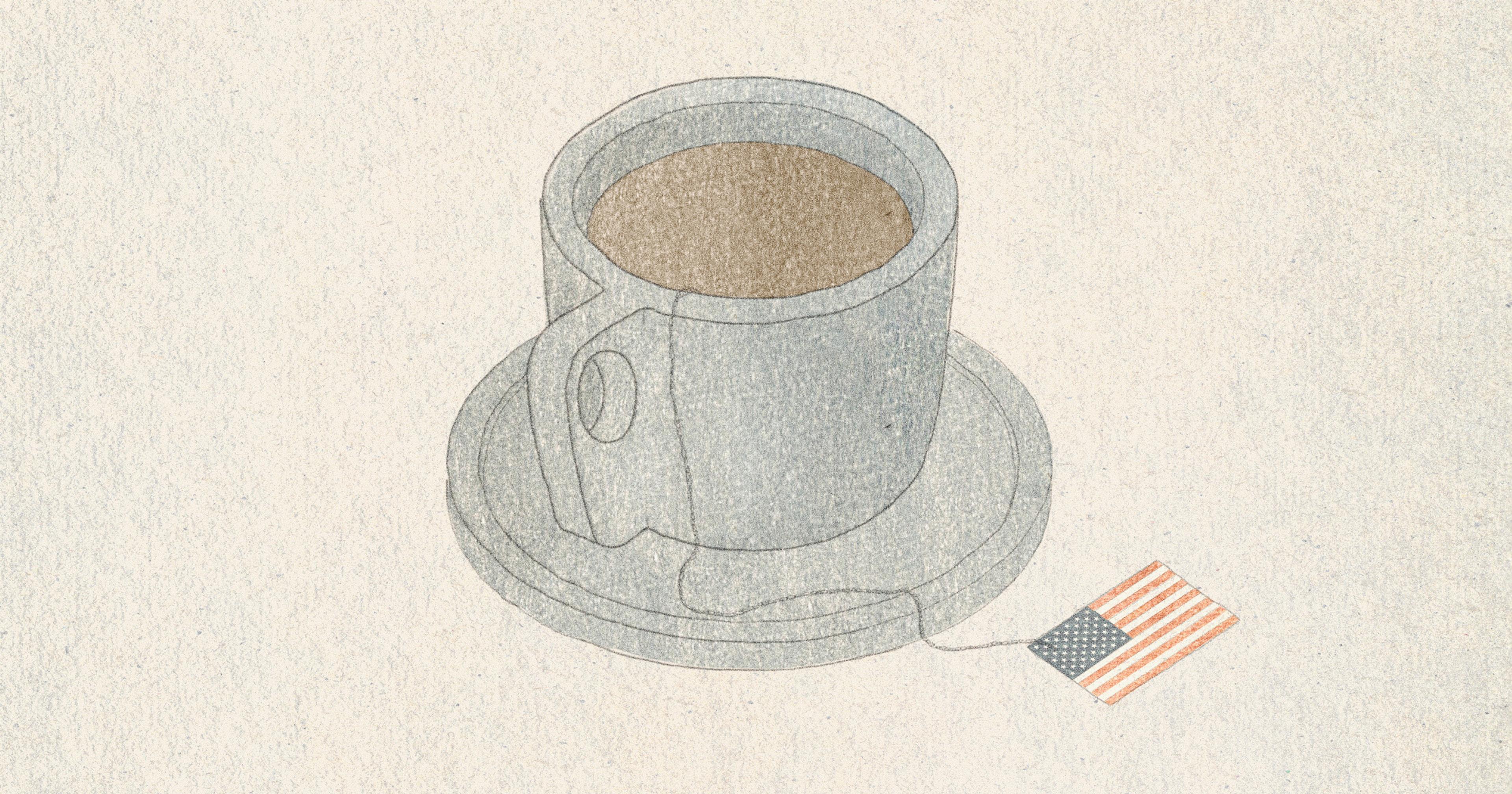Garlic ranks high on our list of beloved ingredients — meet the die-hard enthusiasts who are obsessed with improving it.
I imagine that you eat garlic. Most people do. Garlic is everywhere, all the time. It appears seasonless. It stores for months. Widely beloved, but rarely considered closely. So you might not know that these days, almost all of the garlic you can buy — whether from among a pile of perfect silverskins in your grocery-store basket, or an ivory-and-pink Chesnok red from the farmer’s market — is a little clone of some other garlic. You might not know that, nine months after you break off a clove and bury it, it will have fractaled into a head of near-identical cloves. You may not know that this process is faster and more consistent than planting seeds, which, like apples or citrus or rhubarb, don’t grow true — an offspring might not resemble its parent in any useful way.
But none of this is the crazy thing. The crazy thing is not that garlic isn’t grown from seeds; it’s that, for the most part, it can’t be. Ever since people began cultivating garlic — six millennia ago by some estimates, 10 by others — it’s primarily been done through asexual reproduction. In all those thousands of years, scarcely a single plant was coaxed to produce one solitary seed.
And so it forgot how.
About 15 years ago, a Missouri farmer and former union painter named Mark Brown began trying to coax true seeds from his garlic — an attempt, essentially, to undo thousands of years of domestication. (As an aside: What’s typically called garlic seed is not actually a seed, but rather the clove planted to grow a bulb. A true seed, on the other hand, is the small black sphere produced when pollen meets stigma.) It took years for the plants to cough up just a few small dark orbs. Only about 8 percent of them germinated. “You build your history of true garlic seed on failure,” Brown told me this spring, frogs chirping in the background. “That’s your foundation.”
The seeds that did germinate emerged with novel combinations of traits. He described one early success: a garlic that was pleasantly spicy, stored well, and grew a gargantuan scape. He named it Vavilov, after the Soviet geneticist. It’s still one of his most popular varieties, out of more than 200 that he grows. Brown is part of an informal network of independent growers who are cultivating garlic from true seeds — referred to, among garlic people, as TGS — to increase its resilience and diversity, to develop distinctive calling-card varieties, and to simply see what’s possible.
“Ironically,” Ted Jordan Meredith writes in The Complete Book of Garlic, something of a Bible for garlic people, “it is largely people that are responsible for recovering and preserving what was nearly lost as a result of human intervention.” It was a seductive notion: to create something new by making it wilder.
–
In the spring, Avram Drucker invited me to his farm, Garlicana. It’s located in Tiller, Oregon, about an hour and a half from the California border — a community made famous when much of it was put up for sale in 2017. (Most garlic grown in the United States comes from the Pacific Northwest and northern California. That said, American output is dwarfed by that of China, which produces around 90 percent of the world’s garlic, much of it destined for garlic powder and other processed products.) Before Drucker moved here in 2008, the land was just a junkyard, filled with trash and rusted-out cars. It took a decade to level the fields and produce arable soil, which even now is primarily hard, rust-red clay.
I’d met Drucker the previous fall at a Portland festival devoted to chicories, of all things. He stood behind a long table upon which were a dozen or more baskets of garlic and shallots, varieties listed on placards in elaborately calligraphed type. Those he’d developed from true seeds bore eclectic names. Some were invented, nonsense palindromes, while others were pulled from folklore or Ursula Le Guin novels. “When you breed anything, whether it be garlic or anything else,” he told me, “you create stories.”
“Ironically it is largely people that are responsible for recovering and preserving what was nearly lost as a result of human intervention.”
The tattoos wrapping down his arms ended in a small inked illustration of a garlic bulb on one middle finger. Before he started farming, he was squatting in Seattle and Portland, immersed in justice projects with a punk-rock bent — delivering books to prisoners, working with Food Not Bombs. In the world of garlic breeding, Drucker’s name is well-known; while reporting this story, I lost track of the number of times that someone mentioned his work.
He led me across the field, down the rows between plants sprouting flaglike from the soil. He grows around 150 types, roughly half of them created out of true seeds. Some were tall, some were short. Some were stiff, some were floppy. They were all green, but one was of a slightly bluer green. The bright afternoon sun washed out their differences, but I flatter myself to think I could actually discern the finer distinctions between horticultural groups — among the glazed purple stripes, marbled purple stripes, Creoles, or rocamboles — let alone between one generation of a breed and the next. The bulbs grew invisibly underground. I could not see garlic the way Drucker sees garlic, but it struck me that that was why I’d come: to understand why he and others do this work. To pay the feverish, single-minded attention necessary to grow true garlic seed was, I thought, to notice the object of that attention remade.
He describes himself as a garlic obsessive, though he says, often, that he also believes obsession is arbitrary — just about anything can catch your eye. Still, for the growers I spoke with, garlic seemed to have an intrinsic allure, even if it wasn’t something they always described in material terms.
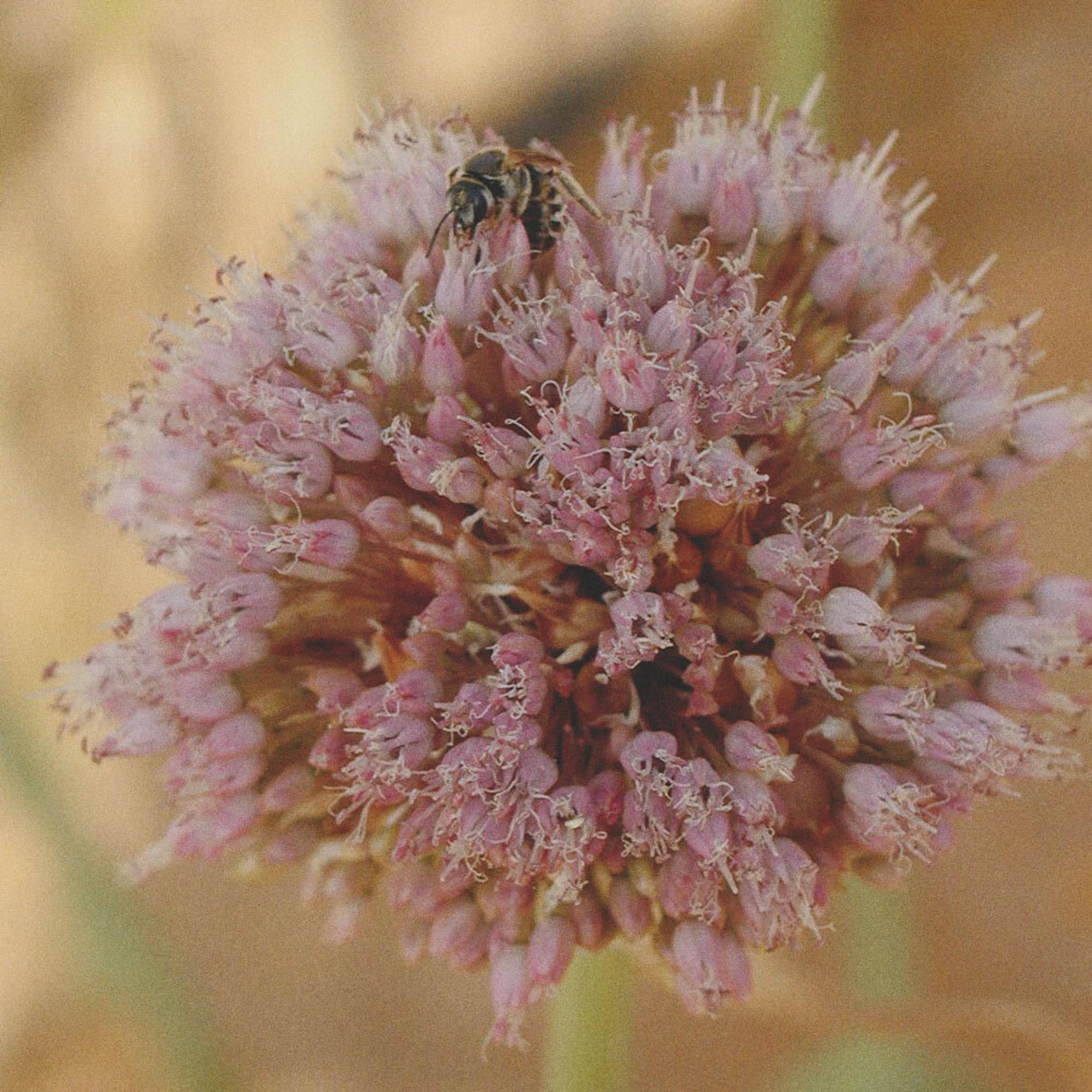
Amit Shiftan
“Garlic is mysterious and magical.”
“I’m drawn to it in a way that I’m not drawn to others.”
“As soon as you start thinking deeply about it, then you just can’t not anymore.”
“I think it’s kind of a sexy plant. I don’t consider radishes sexy, or turnips sexy, even though I like both of them.”
In The Complete Book of Garlic, Meredith describes garlic as “a plant that is both mundane in its everyday uses and mystical in its resonance with us.”
“You know,” Drucker told me, “one of the things you’re selecting for is charisma.”
At the end of one row of garlic, a cluster of small pink flags fluttered in the breeze. Each one marked a separate generation of a separate TGS offspring — none of them yet remarkable enough to earn their own names. It might take years for any of them to pay off. Perhaps none of them will. The work is minute, meticulous, and unfathomably slow. Drucker might start with a hundred seeds and, over years, whittle down to a single plant he thinks is worth propagating, whether due to qualities of the bulbs or of the leaf architecture; then, he’ll grow it from seed cloves for stability.
The garlic flower contains both flower buds and tiny cloves called bulbils, a strange mash-up of organs, as though you were to look down at your hands and find toes growing among your fingers. This means that when the garlic bolts, the true-seed grower must remove the bulbils to encourage the flowers to mature. “It’s a long-term nerdy project,” Drucker said, “that hardly anyone’s ever going to stick through.”
–
The study of garlic reproductive pathways is only a few decades old. In the 1950s, Soviet researchers managed to get seeds from garlic, and starting in the 1980s, a flurry of papers by American and Japanese scientists described garlic fertility and seed production, while they also conducted expeditions to central Asia to collect wild garlic accessions for study. (The USDA declined multiple requests I submitted to speak with the pioneering botanists Barbara Hellier and Philipp Simon, who have shared garlic accessions with several of the growers I interviewed.)
“To protect their financial investments, the private sector has largely kept its research and development secretive and proprietary.”
Outside of the lab, breeding garlic using true seeds is even younger. Dillon Haggerty, a Washington farmer who is growing his first season of seeds, said, “It’s not like it’s a common practice.” Ted Meredith echoed this, telling me that the biggest change he’d observed since he started writing about garlic was more awareness of TGS among small-scale growers.
Yet it could also prove critical to the future of garlic as a crop. A 2004 study showed that around 50 percent of garlic varieties grown under different names are genetically identical. Generations of cloning have reduced its diversity, making it vulnerable to disease and climate change. Haggerty and Mark Brown both said they know some farmers who can’t grow garlic due to a fungus in their soil. Seeds, on the other hand, fuse genetic material from both pollinator and pollinated, increasing the crop’s resilience by introducing new combinations of traits. Some true seed advocates note that this genetic diversity will also be an asset as the planet grows hotter and extreme weather events become more common.
Garlic is remarkably sensitive to its environment, the same breed displaying different traits in different climates. True garlic seed allows growers to develop cultivars that thrive on their particular corner of farmland. In the late ’90s, Joseph Lofthouse quit his job as an analytical chemist and moved home to Paradise, a small Utah town near the Idaho border where his family had farmed for generations. He tried to grow garlic, but commercially available varieties failed to thrive in his high mountain valley, some 5,000 feet above sea level. His true garlic seed cultivars, on the other hand, are specifically adapted to their environment.
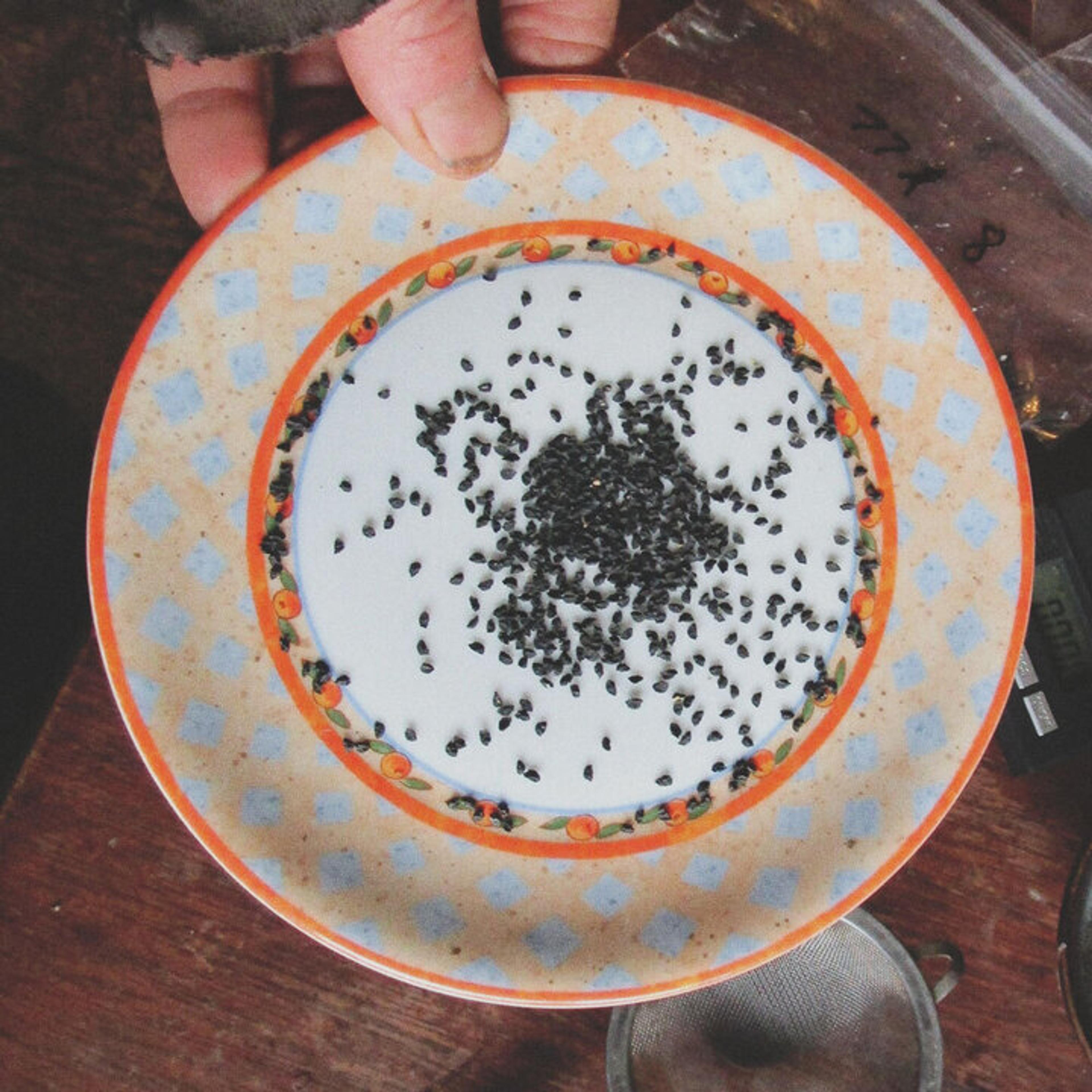
True garlic seeds
·Avram Drucker
Lofthouse calls himself a “good little Mormon boy” and signs his emails “Love, Joseph.” He wears caftans and kilts and often goes barefoot. Though he used to sell his garlic, these days, he focuses exclusively on his breeding project — identifying promising new plants based on how they grow and how they taste. “I select for seediness above all other traits,” he told me. In contrast with Drucker’s meticulous accounts of bulb size, clove count, scape weight, and the like, Lofthouse is more inclined to let nature run its course; he doesn’t record his plants’ parentage. He is also devoted to spreading the word about true seed. He wrote a book, Landrace Gardening, which has sold nearly 10,000 copies, and manages a Facebook group of nearly a thousand amateur TGS growers. He thought they were driven by a shared desire: to make something connected to their own specific land.
–
As we walked among the garlic rows, Drucker turned back to look at me: “This will be a digression, but it’s important,” he insisted. “It’s a fundamental difference between my model and the professional model, and where those clash. That’s something that, to me, is worth elaborating.”
As the study of garlic reproduction has grown more robust, large private businesses have used this research “for larger-scale breeding projects,” Meredith writes in The Complete Book of Garlic. “To protect their financial investments, the private sector has largely kept its research and development secretive and proprietary.” In a sense, independent growers are working in direct opposition to this black box, committed to sharing their findings and seeking a closer relationship to the land.
The point of this story, I thought, wasn’t about the seeds themselves.
In 2012, Drucker and Meredith, who had been collaborating for several years, published a guide to growing true garlic seed. Although large commercial growers and researchers were producing true seed, they explained, few small growers were participating in the process. “We can change that,” they wrote. They published, in part, in order to democratize access to TGS; according to Drucker, they had learned that at least one patent application on the process was pending. “It’s a fuck-you to intellectual property rights,” he told me. “Ideas should be free.”
At Gateway Garlic Farms, Mark Brown, too, cited seed patents as “something that … made me go balls-out” on TGS. “Agronomical benefits belong to the world,” he told me. Since 1930, the Plant Patent Act has made it possible to patent crops produced asexually — the typical pathway for garlic. In 2001, the Supreme Court ruled that seeds could be patented, too. As public breeders face a decline, perhaps principled independent growers will be the ones picking up the slack. New types of garlic can be a mark of distinction for these small farmers, making them stand out in the market. “The hybrids that we’ve created all seem to have been superheroes,” Brown said.
–
After we spoke for the first time, Drucker steered me toward Rina Kamenetsky Goldstein, a prominent garlic scientist who recently retired from the Volcani Institute, Israel’s national agricultural research center. Kamenetsky, who was raised in Kazakhstan, likes to say that she’s from the same place as garlic — Central Asia being one proposed center of origin. She had an exuberant vision for the future: Garlic seeds, she hoped, could become an efficient alternative to propagation by cloves. They kept well, remained disease-free, and were lighter, smaller, and easier to transport.
But when we spoke, she predicted, dejectedly, that it would take decades for true garlic seed to be employed widely in this way. After all, breeding was a long, slow process, and broad commercial applications would require an enormous financial investment. “With all my respect, it’s on the level of hobbies with individual growers,” Kamenetsky said. “I am very pessimistic,” she went on. “I am very disappointed. I did a lot of research — and, finally, it doesn’t work commercially.”
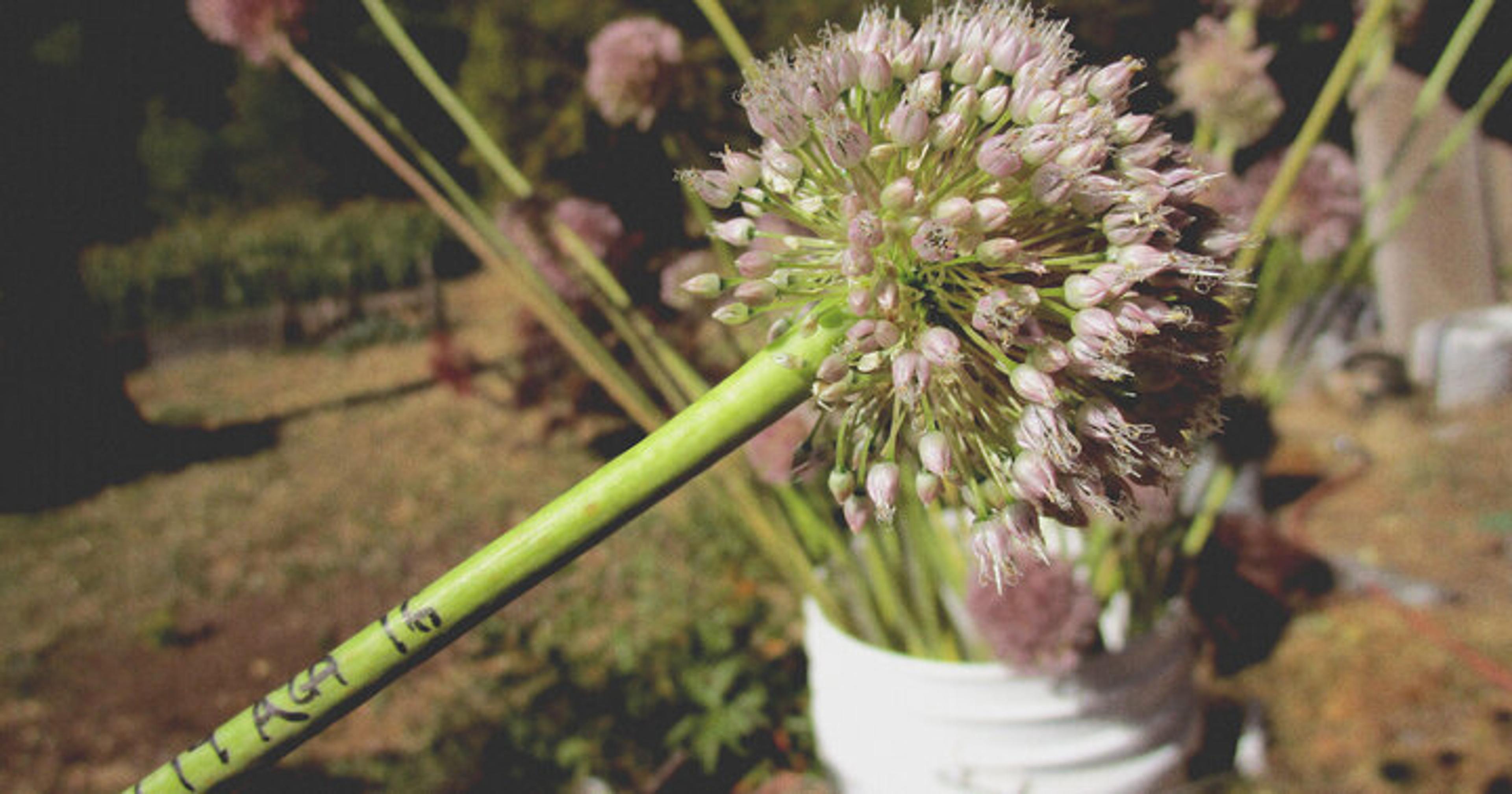
Avram Drucker
At first, I found her pessimism infectious. Was true seed a futile exercise? You had to get on your hands and knees and take a hatpin or a penknife to a flower. Some plants are fertile for only a couple of days, and if you miss that window, better luck next year. The seeds themselves didn’t yield consistent results. It seemed like an absurd practice. But I wondered whether a commercial future was the point that I was looking for — or, maybe, if it was the point of a different story.
The point of this story, I thought, wasn’t about the seeds themselves. It wasn’t even really about the new breeds, but instead about how independent growers make meaning from the work itself. So many of them were interested in making and maintaining new types of garlic for the pleasure of diversity itself. They were still participating in the age-old practice of domestication, but in the opposite direction: By encouraging their garlic to be a little wilder, they were also expanding its potential. Brown hoped to grow a garlic whose flowers didn’t produce bulbils at all — that could produce true seed without human intervention.
Still, you couldn’t silo commercial concerns entirely, nor could you sever the practical from the philosophical arguments for TGS. “You grow things for money, for business, for joy,” Dillon Haggerty told me, “and I’m an information freak, a knowledge freak.” That very tension between domestication and wildness demanded closer attention to the plant and the land from which it grew; many of these growers also harbored a shared interest in sustainable growing practices. In the end, these conclusions weren’t unique to garlic. Drucker recalled encouraging a shopper at the farmer’s market to buy delicata squashes from several different stalls. “I’m the guy at the market who’s not the friendliest of people, but I’m the one that is like, ‘Check this out,’” he said. “I want people to have that connection, because that is going to counter a sense of alienation.”

